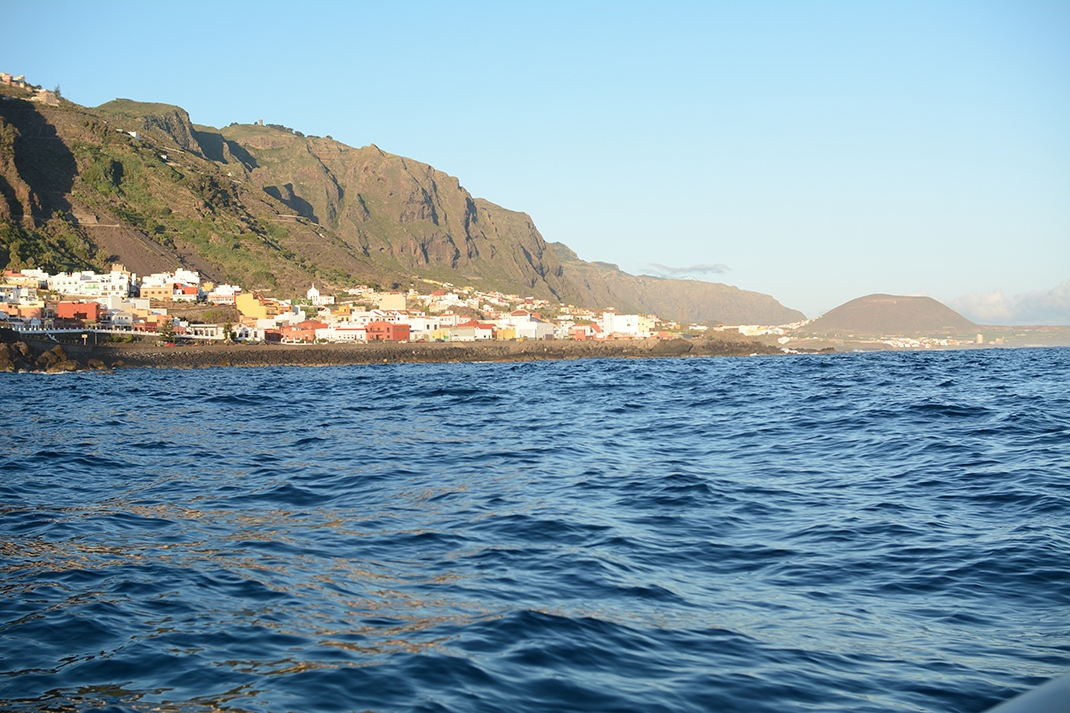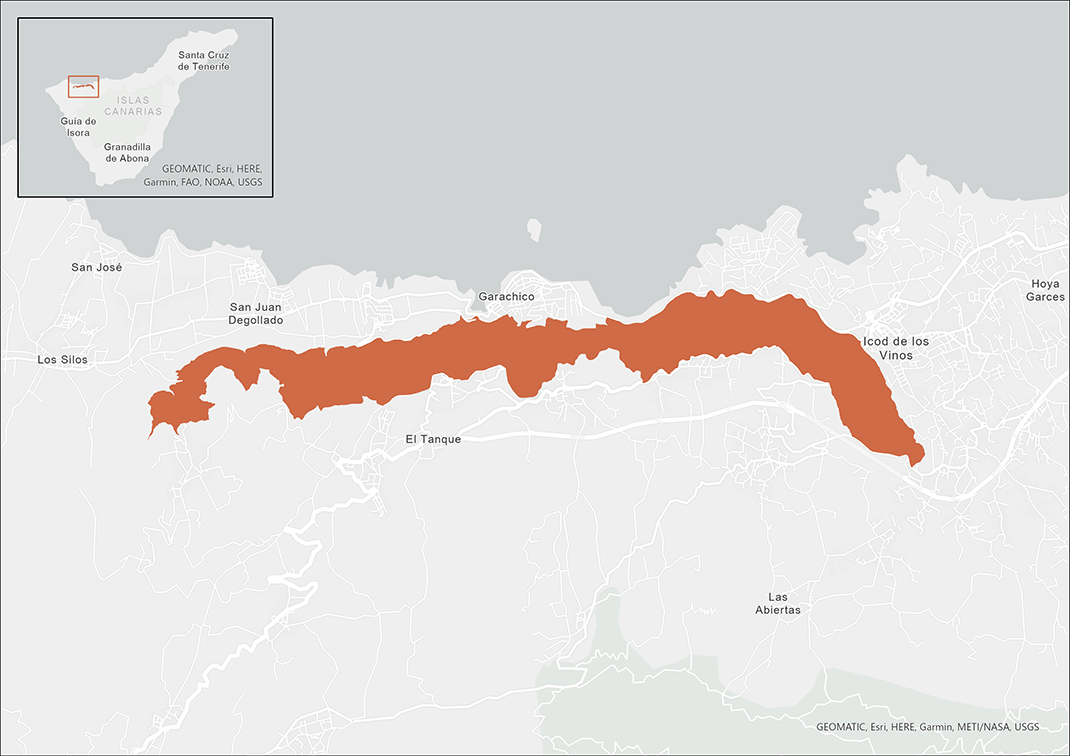Plan your next adventure
Tailor your own route along Tenerife’s trails quickly and easily..
Go to planner
This set of cliffs sits 20m high at Garachico and 600m in the area around Tierra del Trigo in Los Silos.
Recommended time to visit: All year-round.
These ancient coastal cliffs ended up inland after the formation of the Isla Baja, which it now sits atop.
It was created by the accumulation of successive volcanic emissions, from the very beginnings of the island until the historic eruption of the Garachico Volcano in 1706. This is also a place of outstanding natural beauty, as the backdrop for the towns of the Isla Baja and a symbol of the area.
Add to this the significant natural assets and rich archeological heritage that can be found inside this protected landscape.

The La Culata cliffs are home to 51 endemic Canarian species, 9 that are endemic to Tenerife, and 18 plant species endemic to Macaronesia.
In the areaplants vary according to their location, orientation, altitude and soil type:
The morphology of the cliffs also means that there exist some hard-to-access spots which are a haven for fauna.
Reptiles that can be found here include Gallot’s lizard (Gallotia galloti), geckos and skinks. Birds that reproduce here include the Barbary falcon, buzzard, Eurasian sparrowhawk, Scopoli's shearwater, plain swift, laurel pigeon, and many singing birds such as Eurasian blackcaps, Canaries, chiffchaffs, robins, etc.
The only native mammals to inhabit the protected landscape are the three bat species that have so far been identified: the lesser noctule, Madeira pipistrelle and European free-tailed bat.
Unfortunately, this animal biodiversity is threatened by the presence of wild cats and rats, which alongside invasive plant species such as purple fountain grass (Pennisetum setaceum), are the main obstacles to conservation of fragile island ecosystems

552.1 hectares (0.3% of the island)
Phoenicianjuniper (Juniperus phoenicea), wild olive tree (Olea oleaster), Atlas pistachio (Pistacia atlantica), Canary Islands St. John’s Wort (Hypericum canariense), jasmine, espinero (Rhamnus crenulata), acebiño (Ilex Canariensis), mocán (Visnea mocanera), faya (Myrica faya), laurel (Laurus novocanariensis), viñatigo (Persea indica), barbusano (Apollonias barbujana), tree heath (Erica arborea), Canary Island bellflower (Canarina canariensis), capitana (Phyllis nobla), flor de mayo (Pericallis cruenta), cardón (Euphorbia canariensis), Canary Island date palm (Phoenix canariensis), Canary willow (Salix canariensis), Gallot’s lizard (Gallotia galloti), gecko, skink, Barbary falcon, buzzard, Eurasian sparrowhawk, Scopoli's shearwater, plain swift, laurel pigeon, canary, chiffchaff, robins, lesser noctule, Madeira pipistrelle, European free-tailed bat.
Cliffs, ravines, monteverde, thermophilic.
Las Calvas, Tierra del Trigo, El Guincho, la fuga de Interián.
To consult permits for use and updated regulations for this Protected Natural Area, visit the official website of the Government of the Canary Islands.

Tailor your own route along Tenerife’s trails quickly and easily..
Go to planner